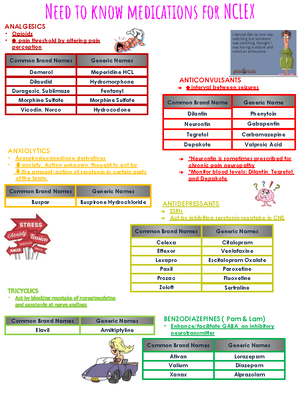- Information
- AI Chat
Was this document helpful?
Hemodynamic Monitoring
Course: Primary Concepts Of Adult Nursing (NUR 3180)
390 Documents
Students shared 390 documents in this course
University: Nova Southeastern University
Was this document helpful?

Hemodynamic Monitoring
Critically ill patient require continuous assessment of the cardiovascular system to diagnose
and manage medical conditions
Achieved via direct pressure monitoring systems
Central venous pressure (CVP), Pulmonary artery pressure (PAP), Intra-arterial
blood pressure (Arterial line)
Nursing care
Ensure system is set up and maintained properly
Ensure stopcock is at level of atrium before measurements obtained
Establish zero reference point
Complications
Uncommon
Pneumothorax, Infection, Air embolism
Hemodynamic monitoring: what does it measure?
Hemodynamic monitoring measures:
Heart chamber pressures, Cardiac output, Preload, Afterload, Contractility
Cardiac Output= Stroke Volume x hr
Total amount of blood ejected by the ventricle in liters per minute
Resting adult: 4-6L/min
Varies based on metabolic need
Stroke Volume
Total amount of blood ejected by the ventricle per heartbeat
Resting adult: 60-130 mL
Students also viewed
Related documents
- MED SURG 1 Final EXAM Study Guide
- Med Surg Exam 2 PDF - Summary Brunner and Suddarth's Textbook of Medical-Surgical Nursing
- Med-Surg Exam 1 - Summary Brunner and Suddarth's Textbook of Medical-Surgical Nursing
- Study Guide Final EXAM FALL 2017
- Exam 3 - Summary Primary Concepts Of Adult Nursing
- Study Guide Exam 2 Summer 2016
















